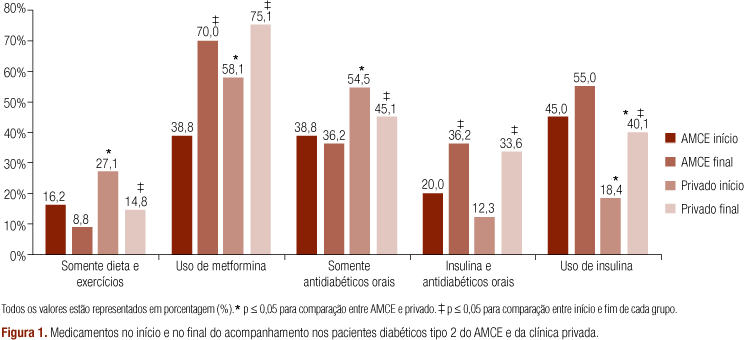OBJECTIVE: To compare the treatment of type 2 diabetic patients from a private clinic with those of a public health service. METHODS: It was designed a retrospective cohort study, including 80 patients attended at the Central Clinic of Universidade de Caxias do Sul (AMCE), which is related to the Single Health System, and 277 patients attended at a private clinic, whom consult between May 2001 and October 2007. RESULTS: Patients attended at AMCE showed a worse metabolic control, although only the values of A1c and total cholesterol have reached statistical significance. Both groups had an improvement in almost all the metabolic parameters. The use of insulin at the end of follow-up (B = 4,66; CI95% = 2,18 - 9,89; p < 0,001) and initial A1c (B = 1,42; CI95% = 1,16 - 1,74; p = 0,001) were determinant of a worse glycemic control. The frequency of visits was determinant of a better control (B = 0,72; CI 95% = 0,55 - 0,93; p = 0,01). CONCLUSIONS: The variables such as the initial A1c and the frequency of visits, which may be considered as indicators of patients' access to the heath system, have greater impact on the control of diabetes than the place where the patients are treated.
Diabetes mellitus, type 2; hemoglobin glycosylated; Single Health System; supplemental health




